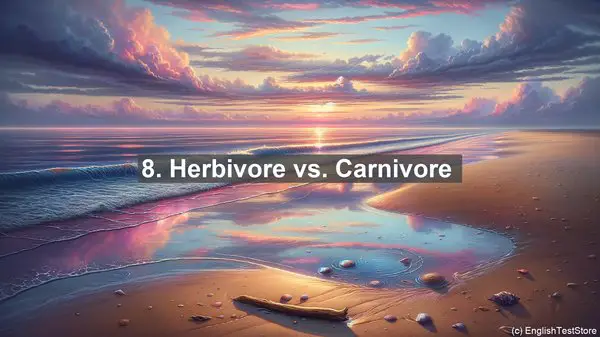Introduction: The Importance of Word Choice in Zoological Studies
Welcome to today’s lesson on the top 10 commonly confused words in zoological studies. As budding zoologists, it’s crucial to have a strong grasp of these terms to communicate effectively in the field. Let’s dive right in!
1. Species vs. Breed
One of the most common confusions is between ‘species’ and ‘breed.’ While ‘species’ refers to a group of organisms that can interbreed and produce fertile offspring, ‘breed’ is a term used to describe specific varieties within a species, selectively bred for certain traits.

2. Habitat vs. Ecosystem
Often used interchangeably, ‘habitat’ and ‘ecosystem’ have distinct meanings. ‘Habitat’ refers to the specific place where an organism lives, while ‘ecosystem’ encompasses the entire community of organisms in a given area, along with the non-living factors they interact with.
3. Endangered vs. Extinct
Understanding the difference between ‘endangered’ and ‘extinct’ is crucial for conservation efforts. ‘Endangered’ refers to a species that is at risk of becoming extinct, while ‘extinct’ means that a species no longer exists in the world.
4. Adaptation vs. Evolution
While ‘adaptation’ refers to the process where an organism adjusts to its environment over time, ‘evolution’ is a broader term that encompasses the changes in a species over multiple generations, often resulting in the development of new traits.

5. Prey vs. Predator
In the context of a food chain, ‘prey’ refers to the organism that is hunted and consumed, while ‘predator’ is the organism that does the hunting. It’s a classic case of ‘who eats whom’ in an ecosystem.
6. Migration vs. Hibernation
Both ‘migration’ and ‘hibernation’ are strategies used by animals to survive in challenging conditions. ‘Migration’ is the seasonal movement of animals from one region to another, often in search of food or better climate, while ‘hibernation’ is a state of prolonged inactivity to conserve energy during winter.
7. Invertebrate vs. Vertebrate
The key difference between ‘invertebrate’ and ‘vertebrate’ lies in their anatomy. ‘Invertebrates’ are animals that lack a backbone, while ‘vertebrates’ have a well-developed internal skeleton made of bones or cartilage.
8. Herbivore vs. Carnivore
When it comes to dietary preferences, ‘herbivores’ are animals that primarily consume plants, while ‘carnivores’ are meat-eaters. Some animals, like humans, fall into the category of ‘omnivores,’ as they consume both plant and animal matter.
9. Anatomy vs. Physiology
While ‘anatomy’ focuses on the structure and organization of an organism’s body parts, ‘physiology’ is concerned with the functions and processes that occur within those body parts.
10. Taxonomy vs. Classification
Often used interchangeably, ‘taxonomy’ and ‘classification’ have slight differences. ‘Taxonomy’ is the science of naming, describing, and classifying organisms, while ‘classification’ is the process of arranging organisms into hierarchical groups based on their characteristics.
